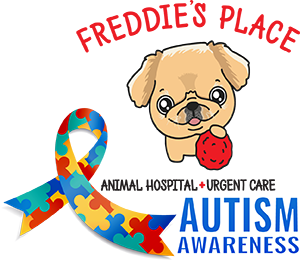A Freddie’s Place Pet Health Bulletin
COVID is back and cases are on the rise. Things change quickly in the world of COVID, with the 2023 variant EG.5 already taking a back seat to the most recent mutation JN.1, which had been found in over 60% of this seasons COVID diagnosis.
We all know how COVID is passed from person to person in the human world, we know the symptoms, the process to test, the treatment, process of isolation and when it is safe to resume regular activities. We have all learned to live in the new world of world wide virus outbreaks.
But what about your pets? Can COVID be passed to and from you to your fur kids? Could they carry the virus to you? What do the symptoms look like in an animal? Where and how can they contract the virus? How is it treated, and can it be fatal? How can you keep your fur kids, and yourself, safe from contracting the virus and still allow your pets to live a normal life?
Our FreddieSez Team looked into the reality of COVID in pets and found that the majority of measures and treatments used for humans are similar for pets. We’ve broken the long list of COVID related items into smaller, logical segments for your use.
Lastly, keep in mind that COVID in animals is not common, and those who are diagnosed are highly likely to fully recover with few problems.
That’s our look at COVID in companion animals. Like with any other illnesses your pets might have, we suggest you bring in the professionals, be prepared with important information so you can give real facts and information, keep calm before you go to the veterinarian, and ask questions while you listen to diagnoses and treatment instructions. The more calm and prepared you are, the faster and more smoothly the process will go.
Keep in mind that this is the winter season. Regardless where you live, the weather is different. Be sure outdoor animals halve access to warm shelter, water, and food. Indoor animals will feel the change as well, as their sleeping and eating routines and norms might be impacted by time change and the shorter days. Be patient and understanding as they adjust..
Thanks for stopping by and taking the time to read our Dog Blog. We have over a years worth of blogs available at our web home. We are sure you’ll find more informative and entertaining reading there.
Until next time, remember to have fun with your fur kids. They are the only ones in your life that see you as perfect just the way you are. Always strive to be happy, always be safe, and above all else… always be Pet Friendly, #FreddieSez!





Leave A Comment